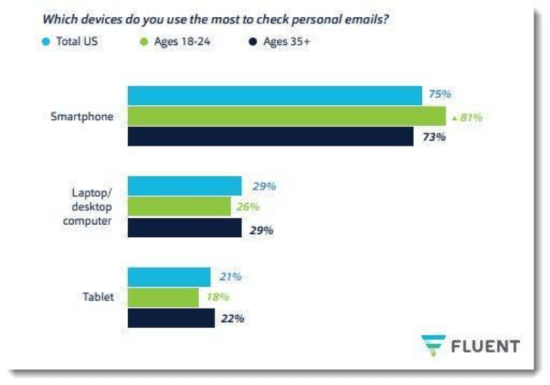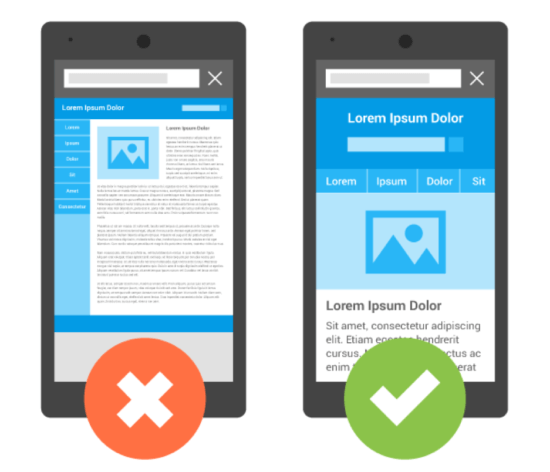Mistakes happen but there are many that can be avoided when it comes to digital marketing plans. Being aware of common mistakes helps you improve digital marketing
Even the top marketing gurus can implement bad marketing strategies if they don’t pay attention to the nitty-gritty, unspoken rules. While they may look good on paper, even the smallest mishap can completely derail favorable results. In this blog, we will cover 5 areas where you can improve digital marketing performance.
Pay attention to these errors so you can best educate your teams and adapt your strategies to avoid dicey marketing situations. Although you might think you’ve heard it all when it comes to managing marketers, it always pays to look for the weak spots in your goals and plans.
Without further ado, let’s dive into 5 examples where you can improve digital marketing...
Need a plan to create a winning marketing strategy?
Get started today using a tried and tested step-by-step process to optimize your marketing.
Start Now
1. Your strategies cross the line between informing and spamming
Although we hope that most marketing professionals have moved past “spamming” their followers with sketchy emails; the timing and quantity of messages can still border on unprofessional, even if your team understands that spam is a huge no-no
What’s interesting is that the marketing trend that places emphasis on avoiding spam has caused some marketers to overcorrect in an ineffective way. There is such a thing as sending too few messages or failing to market at all for fear of treading into “spam” territory.
What many marketing teams have failed to realize in recent years is that most email readers don’t actually hate getting ads. They hate getting bad ads - roughly 83% say that they wish they could use an ad filter instead of blocking ads completely. Email ads aren’t bad as long as they’re used carefully and intelligently with plenty of consideration for the reader.
Your marketing team must decide where to draw the line between spamming potential customers and failing to give them enough information to pique their interest in the products or services.
Core Module

Selecting campaign types and ‘always-on’ activity
Part of the Marketing campaign planning Toolkit
Learn the main types of campaigns that you may need to use to achieve your different marketing goals.
Learn MoreTips to avoid creating borderline “spammy” emails without giving up on advertising
- Keep the layout neat and clean, not cluttered.
- Maintain a professional ratio of text to image.
- Double-check all links to ensure they are reliable.
- Include easy-to-reach contact addresses and numbers so that readers can reach out.
If you were to receive your email as a consumer, would you be able to find valuable information and a clear call-to-action? Or would you view it as a glaring promotion with little to no value?
A great example of an advertorial email that is engaging yet simple is this message from Warby Parker.

The brand is known for including stories and explanations in their original content, so it’s on-brand for them to entice readers to learn more (and buy more) with an email like this one. It’s clearly an ad on behalf of Warby Parker, and yet most readers wouldn’t be annoyed because it’s as informative as it is promotional.
2. You are targeting keywords for traffic rather than customers
As a marketer, you know that a high number of visitors doesn’t necessarily spell money signs. Instead, you look at that number of visitors and understand that it’s your job to convert them into true customers.
That’s where more focused, long-tail keywords need to play a role in understanding user intent. You’ve heard about the growing trend of using long-tail keywords, but do you understand why more marketers are turning to them in their content?
Let’s start diving into this topic by discussing different kinds of keywords altogether. When researching keywords for your messages, you must understand the difference between informational keywords, navigational keywords, and transactional keywords.
There is large importance on informational keywords to show people you’re an expert, but you also need navigational and transactional keywords that draw in traffic to convert.
Core Module

Understanding consumer keyword search behaviour
Part of the Digital experience management Toolkit
Learn about consumer search behaviour in relation to keywords and keyphrases
Learn MoreInformational vs navigational/transactional keywords
Informational keywords that could educate readers (without pulling conversions) might include:
“Web design tips”
“Guide to e-commerce web design”
“Web developing strategies”
On the other hand, navigational and transactional keywords that draw conversions might include:
“Web design services San Diego”
“E-commerce design agencies in San Diego”
“Web design pricing”
While all these types of keywords will work to draw in traffic, there needs to be a perfect balance between educating readers and drawing in potential customers if you want to improve digital marketing SEO strategies.
3. Your campaigns are over-promising and under-delivering
Too many brands market incredible results they can’t guarantee. Although you don’t want to short-sell your product or downplay the benefits of your service, it’s better to surprise customers with fantastic results than to let them down with unmet expectations.
If you’re not alarmed to hear that roughly 32% of customers stop doing business with a brand after only one bad experience, then you’re probably not focusing enough on impressing your customers with results. If you can’t make good on the promises your marketing messages give, you might not get a second chance, and that spells disaster for your business as a whole.

Think about Geico, arguably the most well-known and popular insurance company in America. Their famous slogan is: “15 minutes or less could save you 15% or more on car insurance.” With that slogan, they’re promising two things: efficiency and savings with tangible numbers.
When Forbes looked at eight different states, they found that Geico rates were almost 20% cheaper than the state median. However, you don’t see the brand bragging about saving people 20% - they keep their promise reasonable so they can exceed expectations.
You want your company to be perceived as a doer, not a talker. That attitude begins with your digital marketing management and goals, both domestically and internationally.
4. You are ignoring social trends
If there’s one thing we’ve learned as marketing gurus in the past decade, it’s that there are few things as detrimental to a business than a tone-deaf marketing message.
We all remember when Pepsi had to pull their advertisement starring Kendal Jenner due to the massive outcry at the racial and social implications it presented. People were frustrated by the selection of a celebrity who had nothing to do with social oppression or inequality, and the whole world reacted accordingly.
Marketers throughout the world are concerned about sending an inappropriate or triggering message, which is why paying attention to social and political trends is essential – especially these days.
On the other hand, some brands have benefitted immensely from paying attention to social trends and hopping on them to improve digital marketing engagement.
A great example comes from Gillette’s recent marketing strategy, which highlighted toxic masculinity and issues addressed by the #MeToo movement. Not only was their topic choice extremely timely in terms of social changes, but it appealed to their target audience (men) on an emotional and personal level.
As a marketer, it’s not just your job to reach an audience with a message. It’s up to you to pick the message and make sure that it’s relevant to your brand AND the times, including what’s happening on a social scale.
One strategy to consider implementing on behalf of your own business is the use of social listening tools. Find out what people really think of you or your competitors’ marketing messages. Do they want you to be more engaged and risky? Are they put off by any of the current messages within the industry?
Regardless of what you sell or how you market, it pays to know what your customers want to hear and what they currently think.
Don’t be afraid to encourage your team to play off trends within society. Staying away from touchy subjects isn’t always the way to obtain the most customers, and yet jumping on political or social bandwagons is a risky move.
This is very touchy ground. If you plan to approach social trends, you need to look at the message from every single angle.
Core Module

Social listening
Part of the Social media marketing Toolkit
Learn what’s involved with social listening including techniques and recommended tools
Learn More5. Improve digital marketing mobile experience
More than half of all web traffic is mobile. It’s foolish for marketing teams to ignore how their campaigns/content comes across to mobile users.
While watching television, viewers paid more attention to their smartphones (55%) during commercials. We’ve seen a shift in consumer attention, and as marketing experts, we need to mirror this shift to effectively reach the right audience.
Even email messages are predominantly viewed by all age groups on smartphones. If you’re not making sure that your content is mobile-friendly, you’re not paying attention to one of the biggest, most overarching mistakes in your entire campaign.
For instance, when sending an email out, make sure that the mobile translation isn’t exactly the same as the desktop version. The images need to be more prominent, the text should be easier to read, and the entire message must be formatted to fit a smaller device.
Improve digital marketing and win more customers
It seems like every day there’s something new to learn about digital marketing, even for the top senior digital marketing managers. However, it’s clear that right now, the five things listed above are some of the most serious mistakes modern marketing teams can make.
Think about how your messages are coming across. Target audiences who could truly become customers. Pay attention to where people are viewing your content, and ultimately, be trustworthy and upfront with every marketing message.
In each of these huge, and complex, topics discussed mentioned above, you can review the opportunities, create a strategy and implement actions to ensure improved digital marketing. Our Digital Experience Learning Path has all the resources you need across opportunity, strategy and action to increase the effectiveness of your digital marketing and win more customers.

Core Module

Digital strategy success factors
Part of the Digital marketing strategy and planning Toolkit
Learn how to define a structure and scope for your omnichannel marketing strategy
Learn MoreArvind Patil is a Digital Marketer at
E2M Solutions Inc, a digital agency specializing in white label SEO, and website design and development. He enjoys performing SEO analysis while creating content strategies that connect brands with their target audience. When he is not busy analyzing digital marketing trends, he prefers traveling.

















